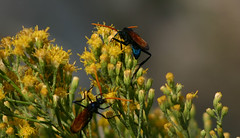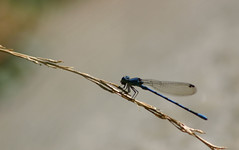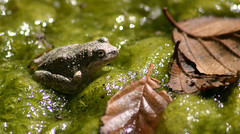
Ephemeroptera, as adults, do not feed but must within hours of emerging, find a mate before they must die. Mayflies are strong indicators of water quality because they need high amounts of oxygen which they take from the water. Animals that breath through the water are more susceptible to heavy metals, and other anthropogenic toxins. Stoneflies, riffle beetles, water pennies, dobsonflies, and caddisflies also are pollution intolerant, and if the body of water is dominated by these animals the water quality is good.
Dragonflies, crane flies, crayfish, dragonflies, clams, crustacea, and beetle larvae can tolerate a much broader range of water quality. However, if the water body has aquatic worms, midge larvae, black fly larvae, pouch snails, leeches and mosquitoes dominating, then the water quality is poor.
This mayfly (and others) were flying above the San Gabriel River at 6 p.m. September 26 the temperature was 81 degrees F. It liked the hood of my car.








